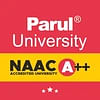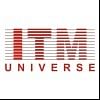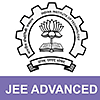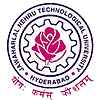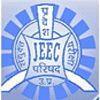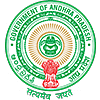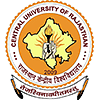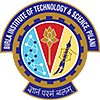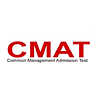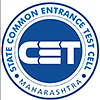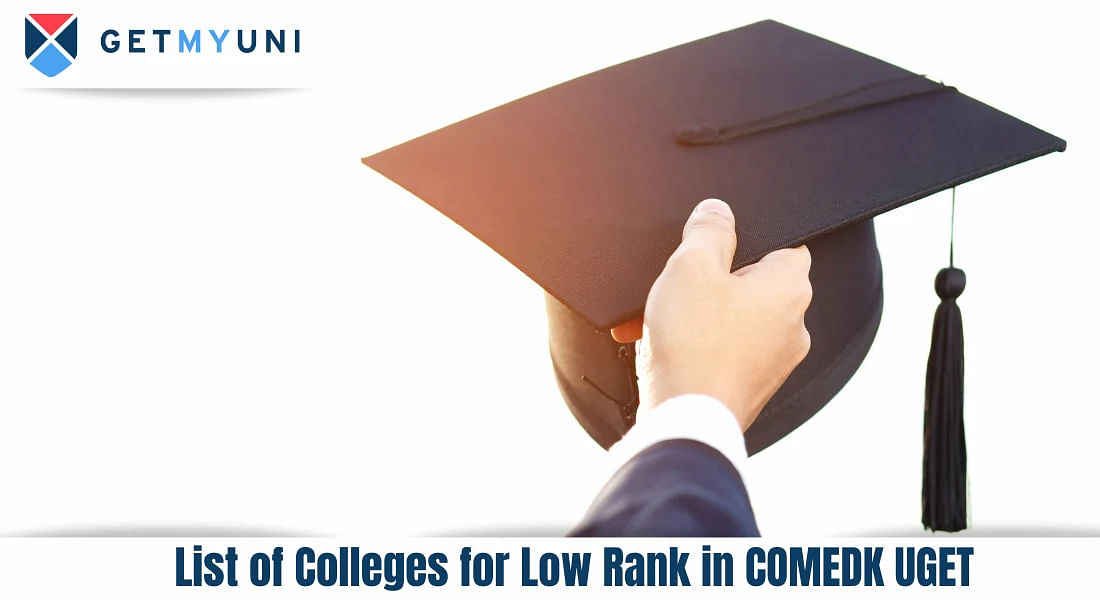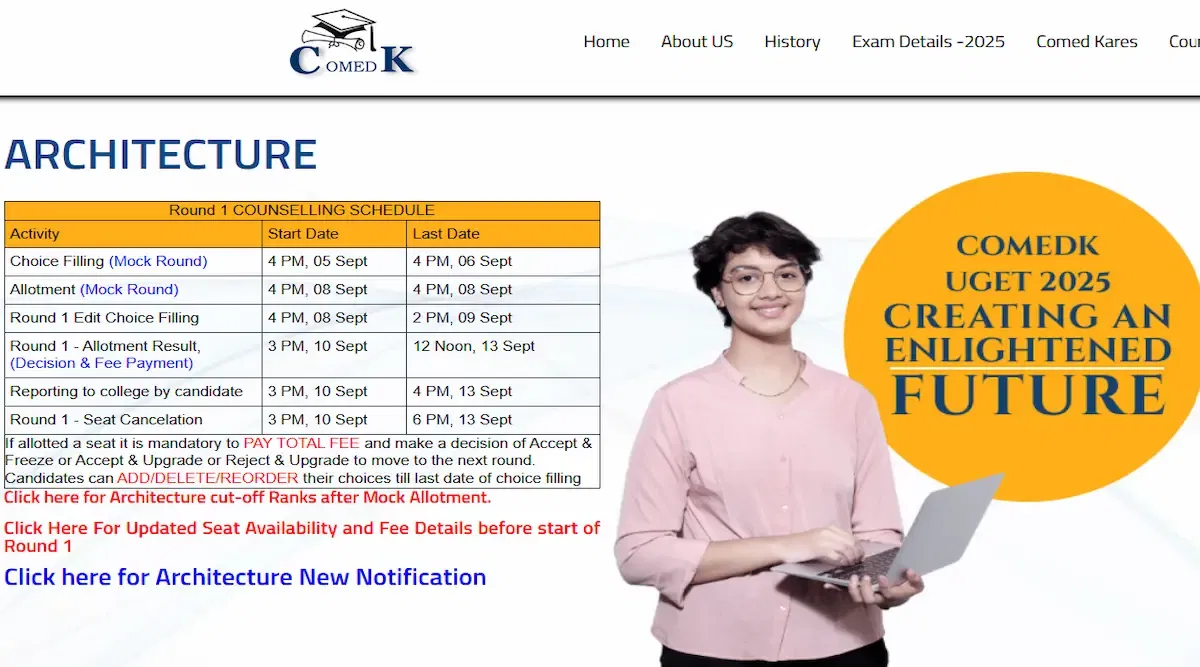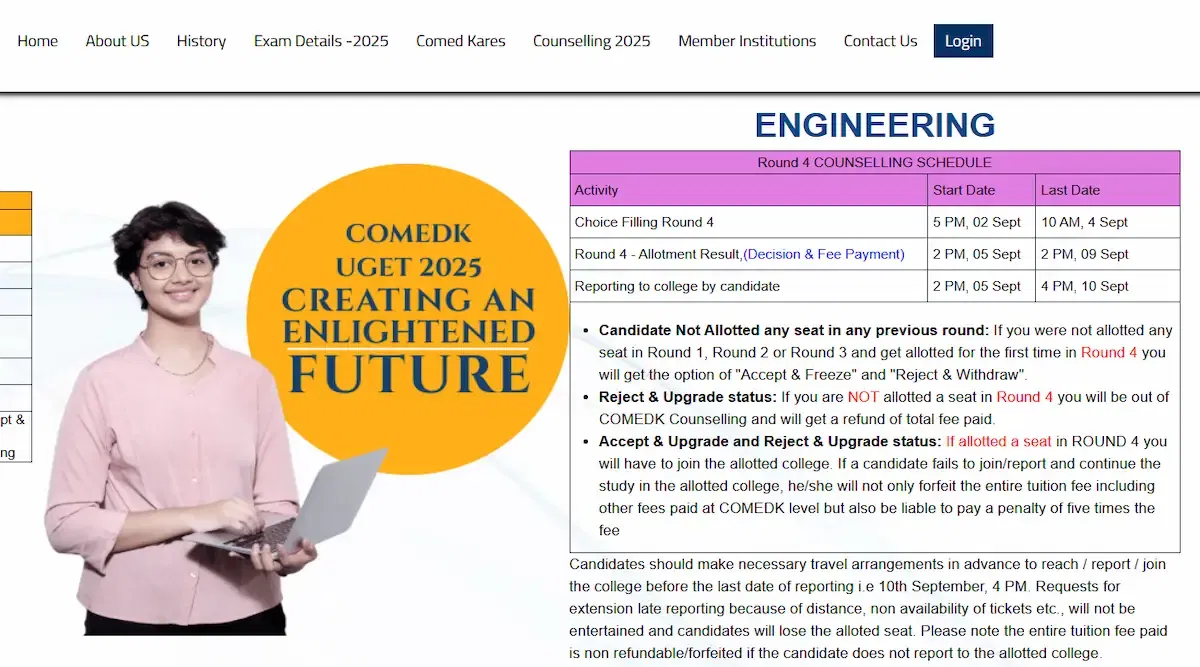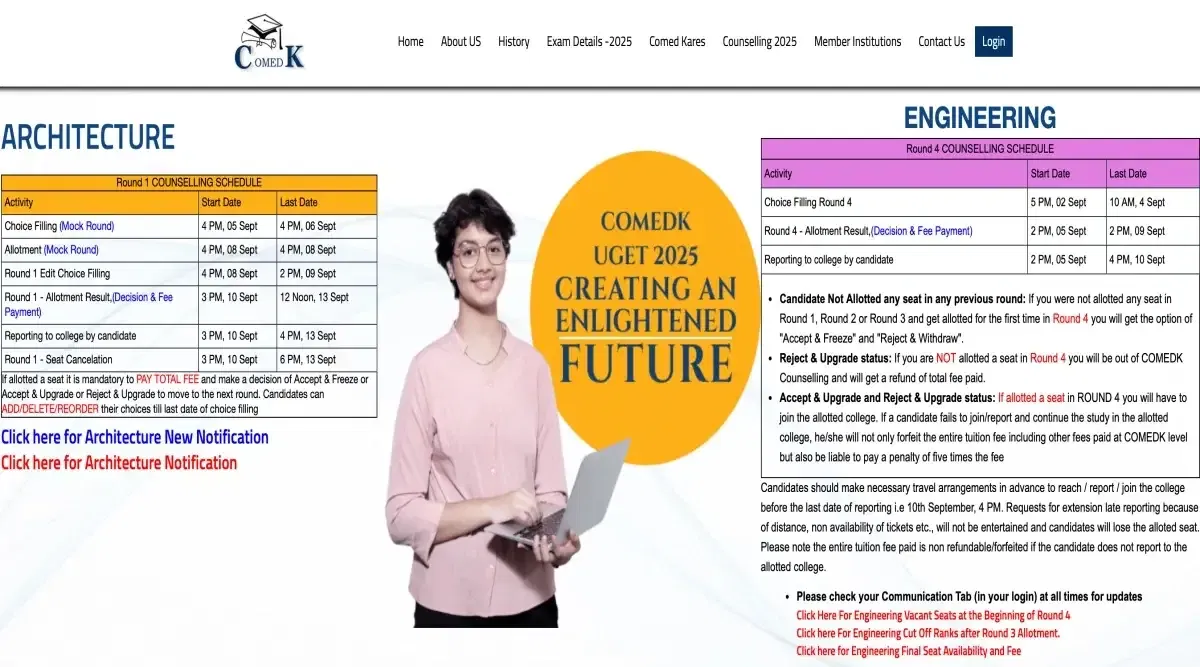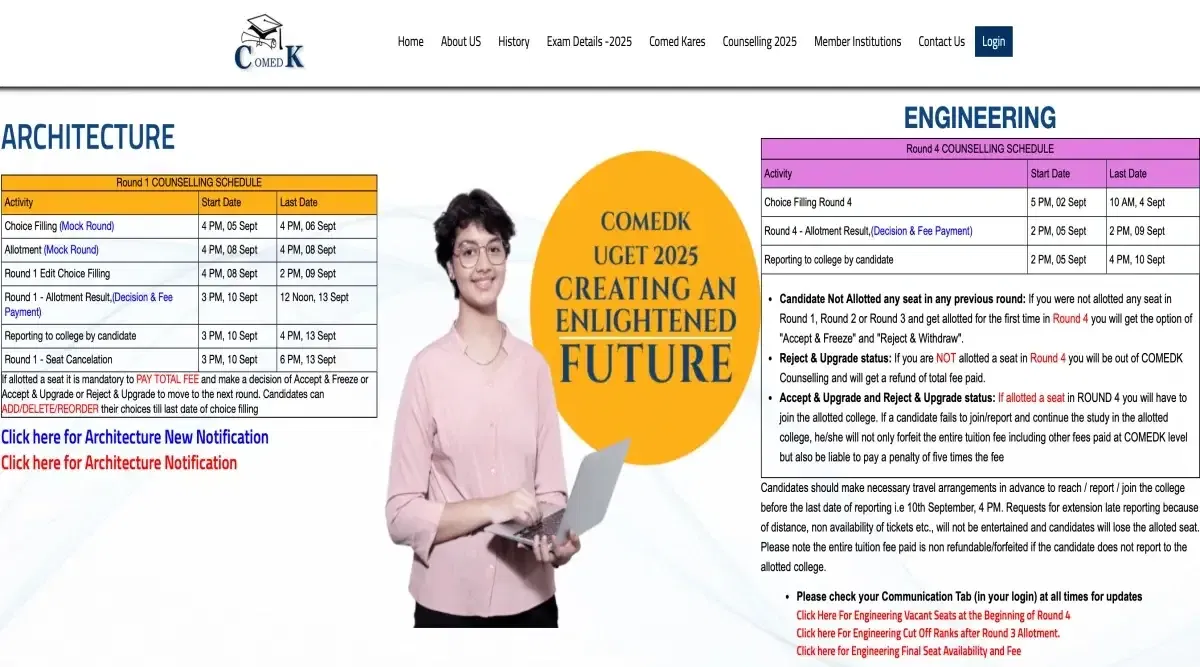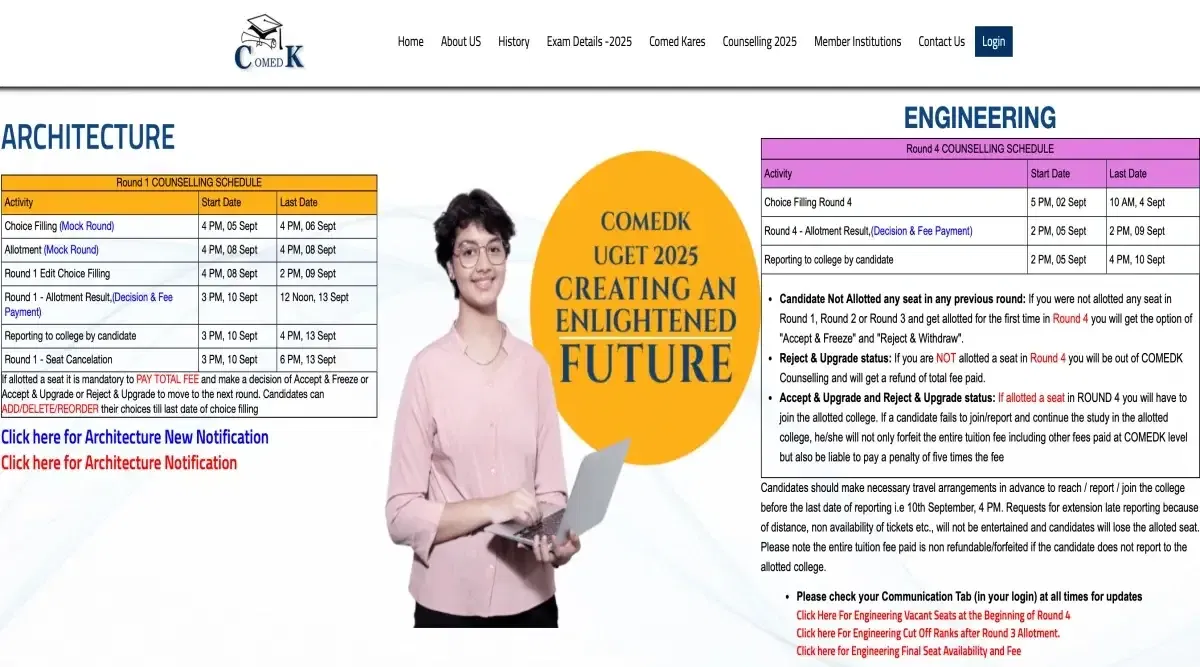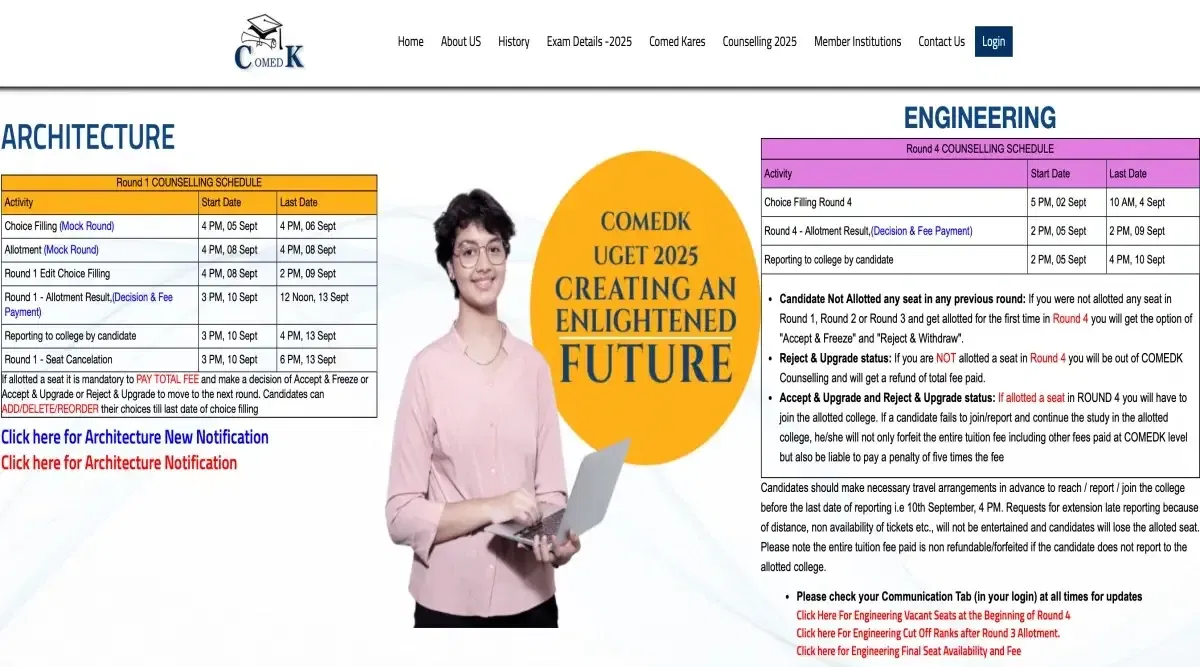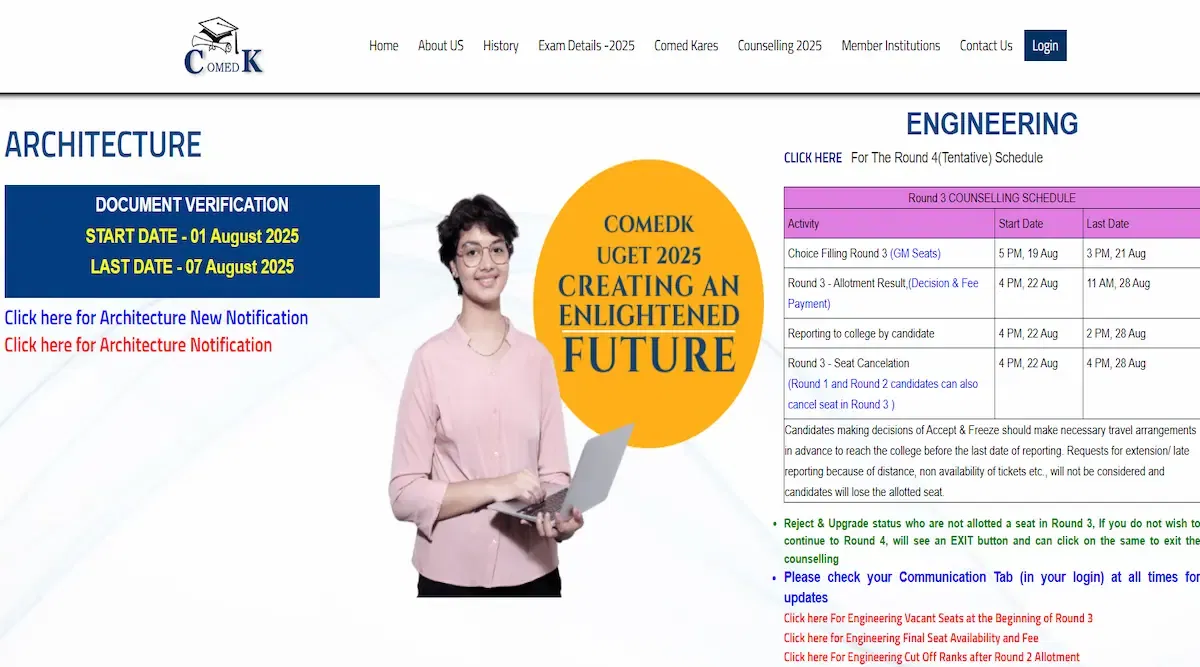
Table of Contents
- COMEDK UGET Syllabus 2025 Highlights
- COMEDK UGET 2025 Syllabus for Mathematics
- COMEDK UGET Syllabus 2025 for Chemistry
- COMEDK Syllabus 2025 for Physics
- COMEDK UGET Syllabus 2025 PDF Download
- COMEDK 2025 Deleted Topics
- COMEDK UGET 2025 Syllabus for Medical
- COMEDK Syllabus Weightage
- COMEDK 2025 Exam Pattern
COMEDK UGET Syllabus 2025 is released by the Consortium of Medical, Engineering, and Dental Colleges of Karnataka (COMEDK) on the official website i.e, www.comedk.org. COMEDK syllabus 2025 consists of three courses namely physics, chemistry, and mathematics.
COMEDK UGET applicants should be familiar with the COMEDK UGET 2025 Syllabus and question paper format, topics that are basically from 11 and 12 standard books.
Check COMEDK UGET Exam Pattern 2025 to know about exam sections, duration, and marking scheme. Details for COMEDK UGET Syllabus 2025 and COMEDK UGET syllabus PDF 2025 are mentioned in the section below.
Apply Now: COMEDK Application Form 2025
Must Attempt: COMEDK UGET Mock Test 2025
COMEDK UGET Syllabus 2025 Highlights
Candidates must thoroughly understand COMEDK UGET Syllabus 2025 in order to prepare well for COMEDK. Some of the important highlights of the COMEDK Exam are listed below.
| Particulars | Highlights |
|---|---|
| Exam Name | COMEDK UGET |
| Full Form | Consortium of Medical, Engineering and Dental Colleges of Karnataka Under Graduate Entrance Test |
| Exam Syllabus | Based on 11th and 12th STD/ 10+2/1st and 2nd PUC |
| Negative Marking |
No Negative marking |
| Subjects |
Physics, Chemistry, and Mathematics |
| Duration of Exam |
3 hours |
Practice Now: COMEDK Previous Year Question Papers
COMEDK UGET 2025 Syllabus for Mathematics
The official authorities determine the COMEDK maths syllabus responsible for organizing the exam. Important topics for COMEDK UGET Syllabus 2025 for Mathematics are mentioned in the table below.
|
Class |
Syllabus Units |
|---|---|
|
Class 11 |
Sets |
|
Relations and Functions |
|
|
Trigonometric Functions |
|
|
Principle of Mathematical Induction |
|
|
Algebra |
|
|
Linear and Quadratic Inequalities |
|
|
Permutation and Combination |
|
|
Binomial Theorem |
|
|
Sequences and Series |
|
|
Co-ordinate Geometry |
|
|
Conic Section |
|
|
Introduction to Three dimensional Geometry |
|
|
Calculus |
|
|
Probability |
|
|
Class 12 |
Relations and Functions |
|
Inverse trigonometric functions |
|
|
Matrices |
|
|
Determinants |
|
|
Adjoint and Inverse of a matrix |
|
|
Differentiability |
|
|
Applications of Derivatives |
|
|
Indefinite Integrals |
|
|
Definite integrals |
|
|
Application of the integrals |
|
|
Probability |
|
|
Differential Equations |
|
|
Vectors Threedimensional Geometry |
Don't Miss: COMEDK UGET Preparation Tips 2025
COMEDK UGET Syllabus 2025 for Chemistry
COMEDK UGET Syllabus 2025 for Chemistry is given out on the official website by the organizing authorities of COMEDK UGET. Important topics for COMEDK UGET 2025 Chemistry.
|
Class |
Units |
Syllabus Topics |
|---|---|---|
|
Class 11 & 12 |
Atomic Structure |
Introduction to Structure of Atom, Atomic models, Quantum Mechanical Model, Shapes of Atomic Orbitals , Rules for Filling Electrons in Orbitals, Stability of Completely Filled and half-filled Orbitals. |
|
Chemical Bonding |
Types of Chemical bonds, Valence Bond Theory, Molecular Orbital Theory, Hydrogen Bond. |
|
|
States of Matter: Gases and Liquids |
Intermolecular Forces, Laws Governing Gaseous State, Ideal Behaviour, Deviation from Ideal Behaviour, Liquefaction of Gases, Liquid State |
|
|
Thermodynamics |
Thermodynamic Terms, Thermodynamic Quantities, First Law of Thermodynamics, Thermochemistry, Spontaneity, Third Law of Thermodynamics,. |
|
|
Chemical Equilibrium |
Introduction to Equilibrium, Equilibrium in Physical Processes, Equilibrium in Chemical Processes, Types of Chemical Equilibria, Applications, of Equilibrium Constant, Factors Affecting Equilibria, Ionic Equilibrium in Solution, Ionization of Acids and Bases, Buffer Solutions, Solubility Equilibria of Sparingly, Soluble Salts |
|
|
Solid State |
Introduction to Solid State Chemistry, Classification of Solids on the Basis of Order in the Arrangement, Crystal Lattices and Unit Cells, Close Packing in solids, Imperfections in Solids, Electrical Properties, Magnetic Properties. |
|
|
Solutions |
Introduction to solutions, Types of Solutions, Expressing the Concentration of Solutions of Solids in Liquids, Solubility, Vapour Pressure of Liquid Solutions, Classification of Liquid-Liquid Solutions on the basis of Raoult’s Law, Colligative Properties, Abnormal Molecular Mass. |
|
|
Redox reactions and Electrochemistry |
Oxidation and Reduction Reactions, Redox Reactions in Terms of Electron Transfer Reactions, Oxidation Number, Types of Redox Reactions, Types of Redox Reactions, Balancing of Redox Reactions, Types of Electrochemical Cells, Electrolysis, Conductance in Electrolytic Solutions, Corrosion. |
|
|
Block & p-Block Elements and metallurgy |
S-Block Elements Group 1 Elements & Group 2 Elements, P-Block Elements Group 13, 14, 15, 16, 17 and 18 Elements. |
|
|
d and f - Block Elements and Coordination Compounds |
d-Block elements, F-Block Elements, Coordination Compounds, IUPAC Nomenclature of Coordination Compounds, Valence Bond Theory as Applied to Coordination Compounds, Importance of Coordination Compounds. |
|
|
Surface Chemistry |
Adsorption on a Surface , Catalysis, Colloids. |
|
|
Chemical Kinetics |
Rate of Chemical Reaction, Factors Affecting Rate of a Reaction, Integrated Rate Equations and Half life, Temperature Dependence of Rate of Reaction, Collision Theory. |
|
|
Hydrocarbons, Haloalkanes, and Haloarenes |
Types of Hybridization of Carbon, Classification of Organic Compounds, IUPAC Nomenclature of Organic Compounds, Stereochemistry and Isomerism, Homolytic and Heterolytic Fission of a Covalent Bond, Basics of Organic Reaction, Electronic Displacements in a Covalent Bond, Aromaticity, Alkanes (Upto 5 Carbon Atoms), Alkenes (Upto 5 Carbon Atoms), Alkynes (Upto 5 Carbon Atoms), Arenes, Haloalkanes and haloarenes. |
|
|
Oxygen containing Organic compounds |
Structure, Preparation of Alcohols and Phenols, Properties of Alcohols, Phenols and Ethers, Preparation of Ethers & chemical Properties, Physical, Chemical Properties and Uses of Aldehydes and Ketones, Carboxylic acids. |
|
|
Nitrogen containing Organic compounds |
Structure, Preparation of Amines, Physical and Chemical Properties of Amines, Diazonium Salts. |
|
|
Chemistry in everyday life |
Chemicals in Medicines, Food, and Hygiene (Soaps and Detergents) |
|
|
Bio-Molecules and Polymers |
Biomolecules, Polymers |
|
|
Environmental Chemistry |
Environmental, Pollution, Water Pollution, Industrial Pollution. |
Also Read: COMEDK Qualifying Marks 2025
COMEDK Syllabus 2025 for Physics
The official authorities responsible for conducting COMEDK UGET 2025 announces COMEDK physics syllabus 2025 for aspiring applicants. The topics covered under the syllabus are mentioned below.
|
Class |
Units |
Syllabus Topics |
|---|---|---|
|
Class 11 |
Physical World and Measurement |
Physics - scope and excitement; nature of physical laws; Physics, technology and society. Need for measurement: Units of measurement; systems of units; SI units, fundamental and derived units. Length, mass and time measurements; accuracy and precision of measuring instruments; errors in measurement; significant figures. Dimensions of physical quantities, dimensional analysis and its applications. |
|
Kinematics |
Frame of reference, Motion in a straight line: Position-time graph, speed and velocity. Uniform and non-uniform motion, average speed and instantaneous velocity. Uniformly accelerated motion, velocity time and position-time graphs. Relations for uniformly accelerated motion (graphical treatment). Scalar and vector quantities; Position and displacement vectors, equality of vectors, multiplication of vectors by a real number; addition and subtraction of vectors. Relative velocity. Unit vector; Resolution of a vector in a plane - rectangular components. Motion in a plane.Cases of uniform velocity and uniform acceleration-projectile motion. Uniform circular motion. |
|
|
Laws of Motion |
Intuitive concept of force. Inertia, Newton's first law of motion; momentum and Newton's second law of motion; impulse; Newton's third law of motion. Law of conservation of linear momentum and its applications. Equilibrium of concurrent forces. Static and kinetic friction, laws of friction, lubrication. Dynamics of uniform circular motion: Centripetal force, examples of circular motion (vehicle on a level circular road, vehicle on banked road). |
|
|
Work, Energy, and Power |
Work done by a constant force and a variable force; kinetic energy, work-energy theorem, power. Notion of potential energy, potential energy of a spring, conservative forces: conservation of mechanical energy (kinetic and potential energies); non-conservative forces: motion in a vertical circle. |
|
|
Motion of System of Particles and Rigid Body |
Centre of mass of a two-particle system, momentum conservation and centre of mass. Centre of mass of a rigid body; centre of mass of a uniform rod. Moment of a force, torque, angular momentum, laws of conservation of angular momentum and its applications. Equilibrium of rigid bodies, rigid body rotation and equations of rotational motion, comparison of linear and rotational motions. Moment of inertia, radius of gyration.Values of moments of inertia, for simple geometrical objects (no derivation). Statement of parallel and perpendicular axes theorems and their applications. |
|
|
Gravitation |
Keplar's laws of planetary motion.The universal law of gravitation. Acceleration due to gravity and its variation with altitude and depth. Gravitational potential energy and gravitational potential. Escape velocity. Orbital velocity of a satellite. Geo-stationary satellites. |
|
|
Properties of Bulk Matter |
Elastic behaviour, Stress-strain relationship, Hooke's law, Young's modulus, bulk modulus, shear modulus of rigidity, Poisson's ratio; elastic energy. Pressure due to a fluid column; Pascal's law and its applications. Effect of gravity on fluid. Viscosity, Stokes' law, terminal velocity, streamline and turbulent flow, critical velocity.Bernoulli's theorem and its applications. Surface energy and surface tension, angle of contact, excess of] pressure across a curved surface, application of surface tension ideas to drops, bubbles and capillary rise. Heat, temperature, thermal expansion; thermal expansion of solids, liquids and gases, anomalous expansion of water; specific heat capacity; Cp, Cv - calorimetry; change of state - latent heat capacity. Heat, temperature, thermal expansion; thermal expansion of solids, liquids and gases, anomalous expansion of water; specific heat capacity; Cp, Cv - calorimetry; change of state - latent heat capacity. |
|
|
Thermodynamics |
Thermal equilibrium and definition of temperature (zeroth law of thermodynamics).Heat, work and internal energy. First law of thermodynamics. Isothermal and adiabatic processes. Second law of thermodynamics: reversible and irreversible processes. Heat engine and refrigerator. |
|
|
Behavior of Perfect Gases and Kinetic Theory of Gases |
Equation of state of a perfect gas, work done in compressing a gas. Kinetic theory of gases - assumptions, concept of pressure. Kinetic interpretation of temperature; rms speed of gas molecules; degrees of freedom, law of equi-partition of energy (statement only) and application to specific heat capacities of gases; concept of mean free path, Avogadro's number. |
|
|
Oscillations and Waves |
Periodic motion - time period, frequency, displacement as a function of time. Periodic functions. Simple harmonic motion (S.H.M) and its equation; phase; oscillations of a spring-restoring force and force constant; energy in S.H.M. Kinetic and potential energies; simple pendulum derivation of expression for its time period. Free, forced and damped oscillations (qualitative ideas only), resonance. Wave motion. Transverse and longitudinal waves, speed of wave motion. Displacement relation for a progressive wave. Principle of superposition of waves, reflection of waves, standing waves in strings and organ pipes, fundamental mode and harmonics, Beats, Doppler. |
|
|
Class 12 |
Electrostatics |
Electric Charges; Conservation of charge, Coulomb’s law-force between two point charges, forces between multiple charges; superposition principle and continuous charge distribution. Electric field, electric field due to a point charge, electric field lines, electric dipole, electric field due to a dipole, torque on a dipole in uniform electric fleld. Electric flux, statement of Gauss’s theorem and its applications to find field due to infinitely long straight wire, uniformly charged infinite plane sheet and uniformly charged thin spherical shell (field inside and outside). Electric potential, potential difference, electric potential due to a point charge, a dipole and system of charges; equipotential surfaces, electrical potential energy of a system of two point charges and of electric dipole in an electrostatic field. Conductors and insulators, free charges and bound charges inside a conductor. Dielectrics and electric polarisation, capacitors and capacitance, combination of capacitors in series and in parallel, capacitance of a parallel plate capacitor with and without dielectric medium between the plates, energy stored in a capacitor. Van de Graaff generator. |
|
Current Electricity |
Electric current, flow of electric charges in a metallic conductor, drift velocity, mobility and their relation with electric current; Ohm’s law, electrical resistance, V-I characteristics (linear and non-linear), electrical energy and power, electrical resistivity and conductivity. temperature dependence of resistance. Internal resistance of a cell, potential difference and emf of a cell,combination of cells in series and in parallel. Kirchhoff’s laws and simple applications. Wheatstone bridge, metre bridge. Potentiometer - principle and its applications to measure potential difference and for comparing emf of two cells; measurement of internal resistance of a cell. |
|
|
Magnetic Effects of Current and Magnetism |
Concept of magnetic field, Oersted’s experiment. Biot - Savart law and its application to current carrying circular loop. Ampere’s law and its applications to infinitely long straight wire. Straight and toroidal solenoids, Force on a moving charge in uniform magnetic and electric fields. Force on a current-carrying conductor in a uniform magnetic field. Force between two parallel current-carrying conductors-definition of ampere. Torque experienced by a current loop in uniform magnetic field; moving coil galvanometer-its current sensitivity. Current loop as a magnetic dipole and its magnetic dipole moment. Magnetic dipole moment of a revolving electron. Magnetic field intensity due to a magnetic dipole (bar magnet) along its axis and perpendicular to its axis. Torque on a magnetic dipole (bar magnet) in a uniform magnetic field; bar magnet as an equivalent solenoid, magnetic field lines; Earth’s magnetic field and magnetic elements. Para-, dia- and ferro - magnetic substances, with examples. Electromagnets and factors affecting their strengths. Permanent magnets |
|
|
Electromagnetic Induction and Alternating Currents |
Electromagnetic induction; Faraday’s laws, induced emf and current; Lenz’s Law, Self and mutual induction. Alternating currents, peak and rms value of alternating current/voltage; reactance and impedance; LC oscillations (qualitative treatment only), LCR series circuit, resonance; power in AC circuits, wattless current, AC generator and transformer. |
|
|
Electromagnetic waves |
Electromagnetic waves and their characteristics (qualitative ideas only). Transverse nature of electromagnetic waves. Electromagnetic spectrum (radio waves, microwaves, infrared, visible, ultraviolet, X-rays, gamma rays) including elementary facts about their uses |
|
|
Optics |
Reflection of light, spherical mirrors, mirror formula. Refraction of light, total internal reflection and its applications, optical fibres, refraction at spherical surfaces, lenses, thin lens formula, lensmaker’s formula. Magnification, power of a lens, combination of thin lenses in contact combination of a lens and a mirror. Refraction and dispersion of light through a prism. Scattering of light - blue colour of sky and reddish apprearance of the sun at sunrise and sunset. |
|
|
Dual Nature of Matter and Radiation |
Dual nature of radiation. Photoelectric effect, Einstein’s photoelectric equation-particle nature of light. Matter waves-wave nature of particles, de Broglie relation. Davisson-Germer experiment (experimental details should be omitted; only conclusion should be explained). |
|
|
Communication Systems |
Elements of a communication system (block diagram only); bandwidth of signals (speech, TV and digital data); bandwidth of transmission medium. Propagation of electromagnetic waves in the atmosphere, sky and space wave propagation. Need for modulation. Production and detection of an amplitude-modulated wave. |
|
|
Atoms & Nuclei |
Alpha-particle scattering experiment; Rutherford’s model of atom; Bohr model, energy levels, hydrogen. Radioactivity alpha, beta and gamma particles/rays and their properties; radioactive decay law. Mass-energy relation, mass defect; binding energy per nucleon and its variation with mass number; nuclear fission, nuclear fusion. |
|
|
Electronic Devices |
Energy bands in solids (Qualitative ideas only) conductors, insulator and semiconductors; semiconductor diode – I-V characteristics in forward and reverse bias, diode as a rectifier; I-V characteristics of LED, photodiode, solar cell, and Zener diode; Zener diode as a voltage regulator. Junction transistor, transistor action, characteristics of a transistor, transistor as an amplifier (common emitter configuration) and oscillator. Logic gates (OR, AND, NOT, NAND and NOR). Transistor as a switch. |
|
|
Communication Systems |
Elements of a communication system (block diagram only); bandwidth of signals (speech, TV and digital data); bandwidth of transmission medium. Propagation of electromagnetic waves in the atmosphere, sky and space wave propagation. Need for modulation. Production and detection of an amplitude-modulated wave. |
COMEDK UGET Syllabus 2025 PDF Download
The candidates must download the COMEDK UGET Syllabus 2025 before starting the exam preparation. Candidates can download the syllabus from the link provided below. Follow the steps to download the syllabus.
- Step 1: Click on the “COMEDK UGET syllabus 2025 PDF” link provided on this page
- Step 2: Click on the download button on the right side of the syllabus.
- Step 3: Either click on the print button and print the syllabus or save it as a PDF.
| Particulars | PDF Downlaod |
|---|---|
| COMEDK UGET Syllabus 2025 PDF-Physics | Click Here |
| COMEDK UGET Syllabus 2025 PDF-Mathematics | Click Here |
| COMEDK UGET Syllabus 2025 PDF- Chemistry | Click Here |
Recommended: COMEDK UGET Books 2025
COMEDK 2025 Deleted Topics
Per the latest notification released on the COMEDK official website, the COMEDK exam syllabus 2025 is reduced. The CBSE has reduced its class 12th syllabus due to the COVID-19 pandemic situation, making the Karnataka State PU Board adopt the changes in the syllabus.
However, the class 11th syllabus will be considered entirely without reducing the Class XI syllabus.
| Units | Deleted Topic |
|---|---|
| Chemistry | |
| Unit 1 - The Solid State |
|
| Unit 2 - Solutions |
|
| Unit 3 - Electrochemistry |
|
| Unit 4 - Chemical Kinetics |
|
| Unit 5 - Surface Chemistry |
|
| Unit 6 - General Principles and Processes of Isolation of Elements | The entire Unit is Deleted |
| Unit 7 - p-Block Elements |
|
| Unit 8 - d and f Block Elements |
|
| Unit 9 - Coordination Compounds |
|
| Unit 10 - Haloalkanes and Haloarenes |
|
| Unit 11 - Alcohols, Phenols and Ethers |
|
| Unit 12 - Aldehydes, Ketones and Carboxylic Acids | Nil |
| Unit 13 - Amines |
|
| Unit 14 - Biomolecules |
|
| Unit 15 | The entire unit is deleted |
| Unit 16 | The entire unit is deleted |
| Physics | |
| Unit 1 - Electrostatics |
|
| Unit 2 - Electrostatics potential and capacitance | Nil |
| Unit 3 - Current Electricity |
|
| Unit 4 - Moving charges and magnetism |
|
| Unit 5 - Magnetism and Matter |
|
| Unit 6 - Electromagnetic induction | Nil |
| Unit 7 - Alternating current |
|
| Unit 8 - Electromagnetic Waves |
|
| Unit 9 - Ray optics |
|
| Unit 10 - Wave optics |
|
| Unit 11 - Duel nature of radiation |
|
| Unit 12 - Atoms | Nil |
| Unit 13 - Nuclei |
|
| Unit 14 - Semiconductor devices |
|
| Mathematics | |
| Unit 1 - Relations and Functions |
|
| Unit 2 - Inverse Trigonometric Functions |
|
| Unit 3 - Matrices |
|
| Unit 4 - Determinants |
|
| Unit 5 - Continuity and Differentiation |
|
| Unit 6 - Applications of derivatives |
|
| Unit 7 - Integrals |
|
| Unit 8 - Application of the Integrals |
|
| Unit 9 - Differentiation Equations |
|
| Unit 10 - Vectors |
|
| Unit 11 - Three-dimensional Geometry |
|
| Unit 12 - Probability |
|
COMEDK UGET 2025 Syllabus for Medical
The Physics, Maths, and Chemistry in COMEDK UGET 2025 medical syllabus are the same as the Medical and Engineering entrance tests. The candidates can find below the important topics of Biology and English. These two subjects are different in both exams.
- Biology Syllabus
| Reproduction in plants | Diversity in the living world |
| Genetics & Evolution | Reproduction in animals |
| Structural organization in animals | Ecology & environment & structural organization in plants |
| Human Warfare | - |
- English Syllabus
| A structure of words | Comprehension passages |
| Clauses and Sentences | Phrases |
| Synonyms and Antonyms | Voice |
| Sentence Completion | One word substitution |
| Modals | Tenses |
| Sequences of words | Determiners |
| Prepositions | Idiom and phrases |
| Rearrange the jumbled words | Rules of conjunctions |
COMEDK Syllabus Weightage
COMEDK UGET Syllabus 2025 is divided into three sections. The candidates must check the syllabus and the syllabus weightage. All the paper sections contain an equal number of questions and equal marks. They are below mentioned in the table of weightage of COMEDK engineering exam syllabus.
| Subjects | B.Tech | Marks |
|---|---|---|
| Physics | 60 Questions | 60 Marks |
| Chemistry | 60 Questions | 60 Marks |
| Mathematics | 60 Questions | 60 Marks |
| Total | 180 Questions | 180 Marks |
COMEDK 2025 Exam Pattern
The candidates must go through the exam pattern to give them a clear idea about the exam. COMEDK exam pattern is described in the table given below.
| Particulars | Details |
|---|---|
| COMEDK Exam Mode | Online |
| Type of Question | Objective MCQs |
| COMEDK Exam Duration | 3 Hours |
| Total Question | 180 Question |
| Sections | 3 Sections (Physics, Chemistry, and Mathematics) |
| Marking Scheme | +1 for every correct answer |
| Negative Marking | No Negative Marking |
| Medium | English |
FAQs on COMEDK UGET Syllabus
Q: How to download the COMEDK UGET 2025 Syllabus?
Candidates can visit the official website and download the COMEDK UGET 2025 syllabus. The syllabus is available on www.comedk.org. COMEDK UGET Exam consists of questions based on class 11 and 12 topics mainly from 3 subjects i.e. Physics, Chemistry, and Mathematics.
Q: Which books can I refer for preparation of Chemistry for the COMEDK UGET 2025?
39 Years’ Chapterwise Topicwise Solved Papers by Ranjeet Shahi, Chemistry for Karnataka CET and COMEDK by Base, Chemistry for Karnataka CET are some books to refer. Further, COMEDK by Dr. Sonar Mariti H can also be studied for preparation of COMEDK UGET 2025.
Q: Is there a topic "Probability" in Mathematics in the COMEDK UGET syllabus?
Yes, the topic "Probability" is covered in Mathematics in COMEDK UGET 2025 syllabus. Students must practice well to get good scores. It mainly consists of the basics of probability such as definition, and basic rules of addition theorem of probability. Candidates should work on solving theoretical problems to get good scores.
Q: Which authority releases COMEDK UGET Syllabus?
Consortium of Medical, Engineering, and Dental Colleges of Karnataka (COMEDK) releases COMEDK UGET Syllabus. The Syllabus consists of questions based on class 11 and 12 topics mainly from 3 subjects i.e. Physics, Chemistry, and Mathematics. COMEDK keeps on posting updates on the syllabus on its official website i.e www.comedk.org.
Q: What is the weightage of each subject in COMEDK UGET Question paper?
COMEDK Question paper consists of 3 subjects i.e. Physics, Chemistry, and Maths. COMEDK Exam is of 180 Marks with all 3 subjects divided into equal weightage of 60 Marks each.



